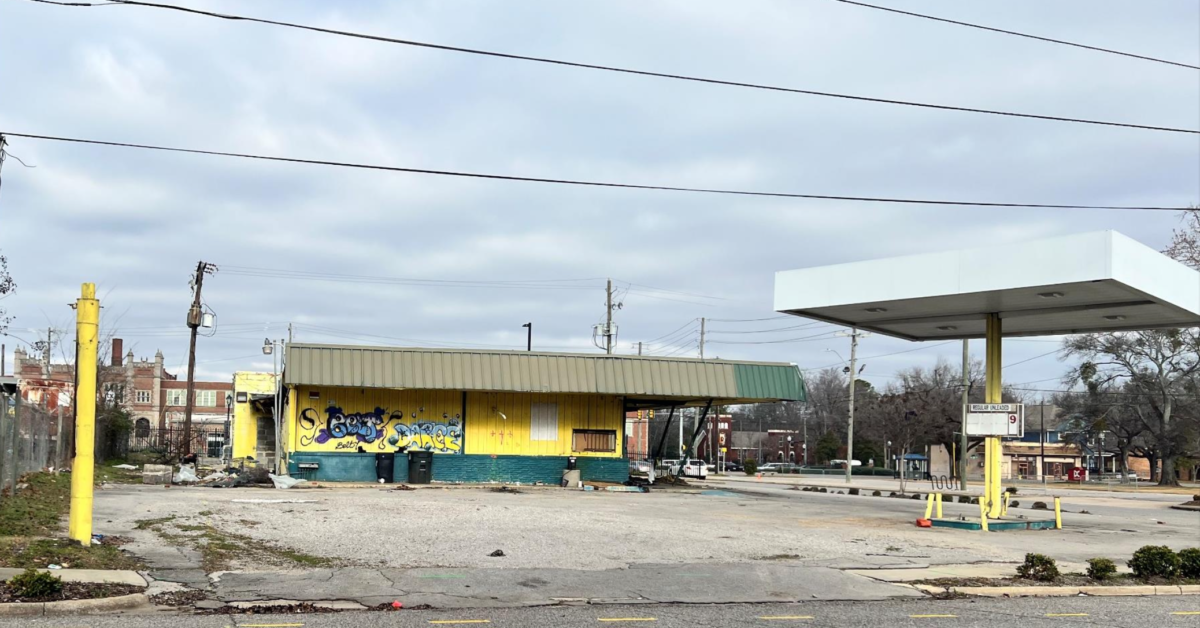
The high desert of Arizona may seem like an odd place for wine tasting. But you wouldn’t know it from the crowds that gathered at the Verde Valley Wine festival, two hours north of Phoenix, on a hot day in May.
As the sun beamed down, hundreds of wine lovers jostled for a spot to enjoy their drinks in the shade. On the edge of a lawn, producers offered up tastings, to-go bottles and cases of wine – much of it grown just down the road.
Kelley Ratliff and her husband drove three and half hours from Tucson for the festival. “We love coming up here to spend the weekend,” she said as she sipped a piquepoul from one of her favorite local vineyards, Chateau Tumbleweed.
The Ratliffs are part of a burgeoning fanbase for wine grown in this famously arid region. The Verde Valley is home to dozens of wineries making everything from assyrtiko to malbec, and wine tourism is already generating tens of millions of dollars for the state, according to a 2019 study by the University of Arizona.

But amid the clink of wine glasses, questions loom about whether Arizona is the right place to encourage the next Napa Valley. The US south-west is mired in a decades-long drought, the Colorado River basin is in crisis, and cities like Phoenix – which faced a record-breaking heatwave this summer – are limiting new construction over water concerns. Is there space for a luxury crop that typically relies on irrigation and, by some estimates, takes 29 gallons of water to produce one glass?
Winemakers argue that the Verde Valley – with its rich limestone soil, high altitudes, large aquifer and temperature shifts – is actually an ideal place to grow European-style wines. They also say that wine is a more water-efficient crop than others being grown here, such as alfalfa and corn.
Wine has been cultivated in arid regions since the start of civilization and needs very little water to grow. A variety of grape known as canyon grapes is native to parts of the south-west, including Arizona, Texas, Utah and Mexico, proving that the land is ripe with possibility. Grape growers in Arizona are finding ways to make it an even more efficient water crop, from developing more sustainable vineyard practices to tapping into their own water supply and growing more drought-resistant grape varietals.
While running out of water is “a very real, stark concern”, wine could be an example of a low-water use crop that fits the dry Arizona climate, said Michael Pierce, viticulture and enology director at Yavapai Community College, home to the state’s only wine program.
“I would argue it’s probably the best crop you could grow [in Arizona],” said Pierce. The land here is rocky, which grapes love, he said. “Wine grapes love those really coarse soils. They don’t like to have wet feet. Meaning you don’t want soggy, clay rich soils that really hold water. So that’s why they do well in arid places [like Arizona].”

Growing wine in an arid climate
The Verde Valley is pocketed with low-lying mesas that stand out against white limestone hills. Thanks to a wet winter and spring, the valley is a vibrant green this summer, with the area around the river full of lush cottonwood and sycamore trees. Alcantara Vineyard, positioned along the Verde River, is reminiscent of a vineyard in southern Europe, with a Spanish-style villa and small flowering grapevines growing 17 varieties including malbec, sangiovese, merlot, petite sirah and grenache.
Like most winemakers in Arizona, Alcantara Vineyards irrigates its vines using groundwater. Most winemakers here prefer irrigation to other methods, such as dry farming, when farmers rely on rainfall and moisture captured in the soil. Controlling the amount of water, they say, is crucial to getting superb fruit.

Ron Brumley, head winemaker at Alcantara Vineyard, came out of retirement four years ago to run the vineyard, which also includes kayaking, horse riding, a restaurant and doubles as a wedding venue. The vineyard gets its water from an ancient aquifer that comes off the Colorado Plateau.
“It is clean, as clear as Perrier, as Calistoga, as Fiji, unfiltered. It’s mineral water it has seeped through the basalt, the volcanic. It’s picked up the minerals of the Earth, it’s been filtered. It is marvelous,” he said.
As a fourth-generation Arizonian, his biggest concern is the water demands of Arizona’s growing population, which rose 11.9% between 2010 and 2020. While Alcantara Vineyard has its own well and the rights to groundwater, Brumley is worried about state officials “coming up here and taking the water” and using it for housing developments in the Phoenix and Tucson area.
“They’re gonna have a problem. Their aquifer is low. I don’t have a problem up here,” he said.
A few miles from Alcantara, Page Springs Cellars is finding ways to make its water stretch further. It comes from wells and a small spring, for which the vineyard is named, that runs across its vineyards and is maintained by the people who live in this small community.
“There’s no regulatory body that controls it. It’s absolutely gorgeous artesian spring water, our wells on-site tap into it,” said Kelsey Hammond, sustainability coordinator at Page Springs Cellars.
The vineyard also uses drip irrigation that slowly releases water directly at the root of each plant, a method that is better for the fruit and less water intensive, Hammond said. The vineyard also makes its own compost that, over time, helps retain soil structure and moisture and avoids water runoff, she added.

Elsewhere in Arizona, some winemakers are feeling more of the squeeze.
Sam Pillsbury, a former New Zealand and American filmmaker, operates a vineyard in the Willcox Basin, a remote 2,000 sq mile area in the state’s south-east. The sunny weather, cheap land and free, unregulated water supply have attracted farmers from around the US. Today it’s one of the state’s most productive agricultural regions, growing about 80% of Arizona grapes along with many other agricultural commodities, like corn, cotton, alfalfa and dairy, all putting a strain on the water supply. Some residential wells have run dry and the land has started to sink in spots due to overpumping of groundwater.
Pillsbury estimates he uses about 5ft of water a year. He recently had to drill a new 800ft for his Pillsbury Wine Company, where he grows everything from chardonnay to grenache, after his 450ft well started to dry up. He worries that one day, he’ll have to drill even deeper.
“We’re pulling more water out of the aquifer than there is,” he said. “Why should some big dairy company owned by people from another part of the world be sucking all the water?”
A battle over Arizona’s water needs
The tension between grape growers, other farmers and urban development highlights the complex nature of water regulation and distribution in Arizona. Water here comes from two places: surface water from rivers, including the Colorado River, and groundwater from aquifers that lie deep in the bedrock.
Who gets to use that water depends on the type of water and where it’s located. Cities like Phoenix and Tucson are in Active Management Areas (AMAs), which are subject to strict regulations for groundwater. In rural areas where Arizona’s grapes are grown, such as the Verde Valley, Willcox and Sonoita, all that’s required is registering a well and certifying the water will be put to beneficial use, such as farming. “It’s a literal free-for-all for groundwater pumping,” said Christopher Kuzdas, senior water program manager at the Environmental Defense Fund.
Arizona today looked very different than when the AMA was passed in the 1980s, Kuzdas said. “As the Colorado River shrinks, Arizona’s reliance on groundwater is going to increase … But the challenge is we’re not actually managing all the groundwater we have.”
Last year, voters rejected a citizen ballot initiative to create an AMA in the Willcox Basin, an initiative that would have limited water use for farmers. It would also have stopped new agricultural farms or vineyards hoping to expand, like Carlson Creek Vineyard, a 320-acre property off a dusty road owned by Robert Carlson III, where their most prolific grape is malbec, which he thinks is the future wine of Arizona. He’s only planted 280 acres of vineyards and hopes to expand to all 320 acres in the future.
“We’re not opposed to regulation. We just don’t want it to be the laws that were written 43 years ago, because they don’t take into account sustainability,” said Carlson. “If they were to just put a stop to all expansion of irrigation ... that land would basically be worthless.”

Still, many argue something needs to change. The climate crisis is making the region drier and weather patterns more extreme, leading to “warmer growing seasons and greater water demands”, according to Jeremy Weiss, climate and geospatial extension scientist at the University of Arizona.
2020 and 2021 are good examples of what the future could look like. “We went from record hot, record dry to near normal temperatures but record wet in the span of two different growing seasons back to back,” Weiss said. “The extremes are making themselves more extreme. How much of an extra challenge that makes for the growers?”
Winemakers argue they might be part of the solution.
Matt Halldorson, a viticultural researcher at the University of Arizona, points out that vineyards use an average of 1.5 acre-feet of water per year, or about 326,000 gallons of water. In comparison, alfalfa uses 4 to 9 acre-feet, while cotton requires around 4 acre-feet. “It’s an extremely water-efficient crop,” Halldorson said.
Meanwhile, vintners have been experimenting with European grape varieties like barbera and viognier that might do even better in Arizona’s dry and hot climate. This makes wine an ideal crop to help spur a conversation for best use practices when it comes to water use, advocates say.
“Because it’s an arid climate, we need crops that want an arid climate, not something that you have to throw so much water on to change the climate around it,” said Pierce as he walked among cases of wine grown and produced by his students, ready to be labeled and sold in the adjoining tasting room. “I think wine grapes are positioned to really be a leader in that conversation of let’s make better choices for the future.”










 English (US)
English (US)